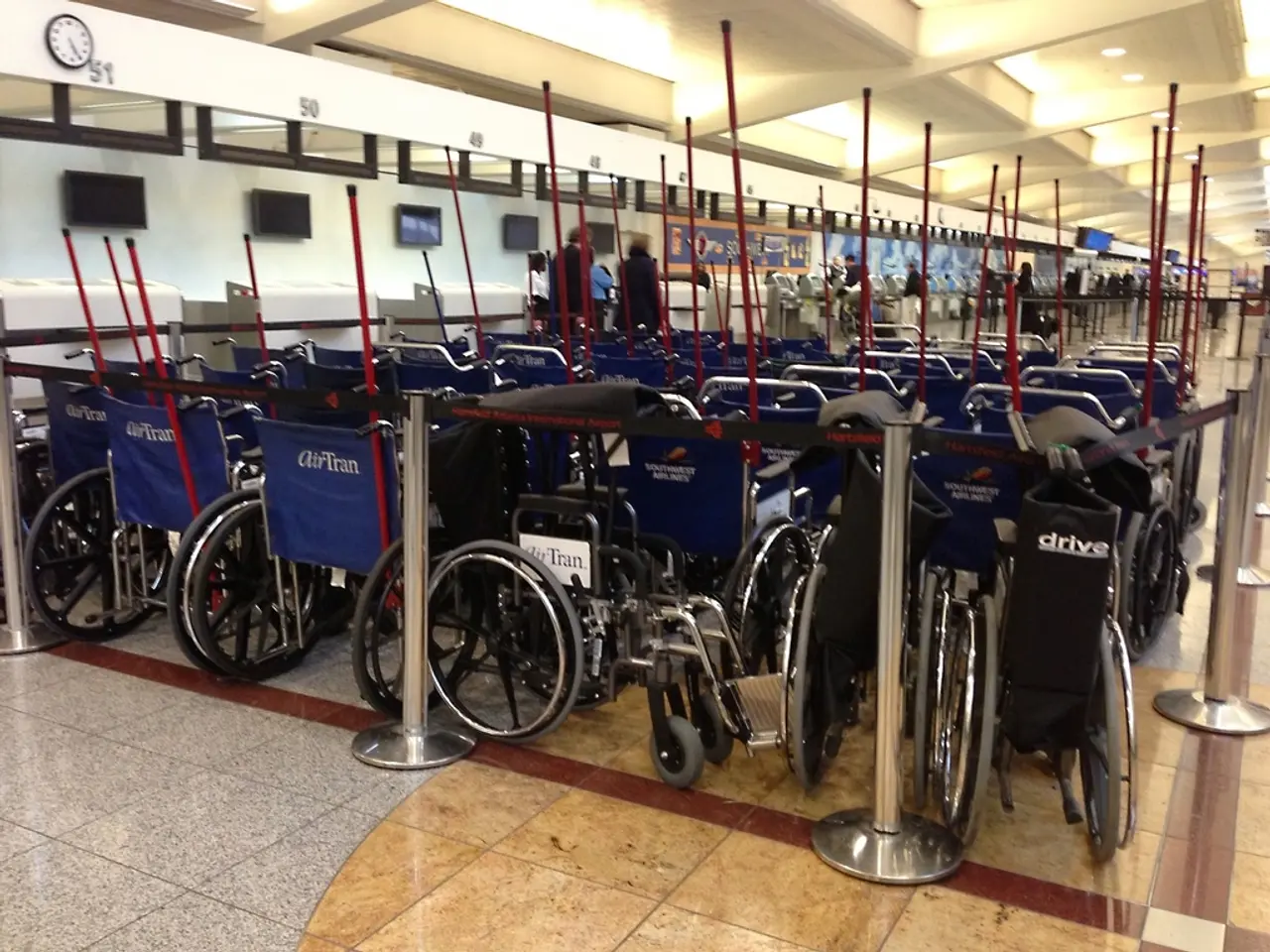Groundbreaking Neuroprosthetic Device Offers Hope in Managing Parkinson's Symptoms for Sufferers
A groundbreaking advancement in the treatment of Parkinson's disease (PD) has been made with the development of a new neuroprosthesis. This innovative device, based on epidural electrical stimulation (EES), targets specific leg motor neurons, complementing existing treatments like Deep Brain Stimulation (DBS) and medication.
The neuroprosthesis, tailored to each patient's spinal cord anatomy and locomotor requirements, has shown significant improvements in PD patients. In a recent clinical trial, a 62-year-old male patient with a 30-year history of PD and severe locomotor deficits experienced a remarkable transformation. The neuroprosthesis, operating in a closed loop and targeting the dorsal root entry zones in the lumbosacral spinal cord, led to improvements in gait symmetry, stride length, balance, and a reduction in freezing episodes.
The device replicates natural activation patterns during walking, addressing the challenges faced by patients despite DBS and medication, such as frequent falls. The neuroprosthesis, in combination with DBS, has also been tested in non-human primates, leading to enhanced mobility, alertness, improved gait, and balance.
The development of this neuroprosthesis involved detailed analyses of natural activation patterns in non-human primates and how these were altered by Parkinson's. Researchers established the feasibility of decoding motor intentions from cortical activity in people with PD, essential for synchronizing EES with ongoing movements.
This latest advancement integrates implanted DBS electrodes with technologies that adaptively engage patients in motor tasks, such as adaptive cycling. This dynamic interaction with the nervous system promotes motor improvements in PD symptoms. The study involved Parkinson’s patients, including military Veterans, who underwent 12 dynamic cycling sessions over four weeks while their brain activity was monitored in areas stimulated by their DBS implants.
The adaptive cycling bike modulated resistance and assistance based on real-time pedaling effort, creating a "push-pull" mechanism that provided variable motor challenges. This stimulation-exercise combination was believed to enhance the rewiring of neural connections involved in motor control, addressing Parkinson’s tremors and related symptoms more effectively than conventional therapy alone.
The findings of this research were published in the prestigious journal, Nature Medicine, offering a new avenue of hope for patients with advanced Parkinson's Disease who have been unresponsive to existing treatments. This neuroprosthetic approach promises an improved quality of life and greater independence for such patients.
In conclusion, the most recent clinical advancement is the synergistic use of existing DBS implants with adaptive motor therapies, leveraging neuroprosthetic technology to induce brain plasticity and motor function improvements in humans with PD, tested in controlled protocols measuring neural and behavioral responses. This revolutionary approach could pave the way for a brighter future for Parkinson's patients worldwide.
- The new neuroprosthesis, based on epidural electrical stimulation (EES), is not only complementing existing treatments like Deep Brain Stimulation (DBS) and medication for Parkinson's disease (PD), but it also targets specific neurological disorders, such as Parkinson's, to offer health-and-wellness improvements.
- This synergistic use of existing DBS implants with adaptive motor therapies, as part of a neuroprosthetic approach, has shown potential in inducing brain plasticity and motor function improvements for PD patients, thus promising therapies-and-treatments for medical-conditions like Parkinson's.




